EP Equipment, as a leading green enterprise, is committed to environmentally friendly initiatives that align with the global movement toward carbon reduction. Among its projects, EP is developing a multifunctional, energy-efficient factory in China, incorporating both solEP Equipment, as a leading green enterprise, is committed to environmentally friendly initiatives that align with the global movement toward carbon reduction. Among its projects, EP is developing a multifunctional, energy-efficient factory in China, incorporating both solar and hydro energy sources. These initiatives are represented in the photovoltaic project at the EP Anji North Factory and the hydro energy utilized at the EP Hubei Casting Factory.ar and hydro energy sources. These initiatives are represented in the photovoltaic project at the EP Anji North Factory and the hydro energy utilized at the EP Hubei Casting Factory.
Anji Factory’s Photovoltaic Power Project
The Anji North Factory recently implemented the first phase of its photovoltaic power project, installing solar panels on 17,000 square meters of rooftop space. These solar modules generate electricity directly for the factory’s use, producing a total of 1.49 million kWh of electricity between January and September 2024—equivalent to approximately 1800 kVA of electrical power.
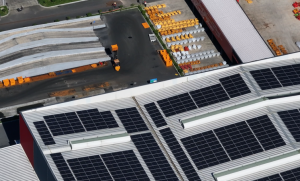
The Anji North Factory recently implemented the first phase of its photovoltaic power project, installing solar panels on 17,000 square meters of rooftop space. These solar modules generate electricity directly for the factory’s use, producing a total of 1.49 million kWh of electricity between January and September 2024—equivalent to approximately 1800 kVA of electrical power.
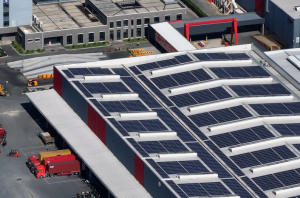
We spoke with Mr. Wang Qixiang, Project Manager from the Environmental Protection Department of Sinopower Equipment, who shared insights on the project’s current status: “Right now, the photovoltaic project is designed for self-generation and self-consumption for factory production. Although it doesn’t yet cover all energy needs due to variable power generation, we plan to add energy storage equipment and expand to Phase II of the project. Once completed, the photovoltaic setup will supply all the power needs of the Anji North Factory.”
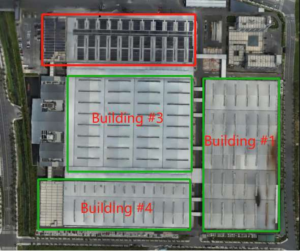
The photovoltaic project will ultimately cover 75,000 square meters of rooftop space, with Phase II expanding coverage as seen in the accompanying image, where sections 1, 3, and 4 are under construction, while section 2 is already operational.
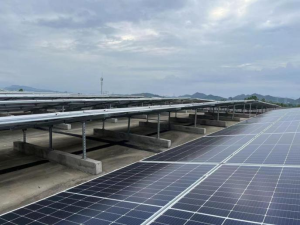 Why EP Chose Photovoltaic Power
Why EP Chose Photovoltaic Power
Photovoltaic (solar) power provides a renewable and sustainable energy source that is both safe and reliable.
Unlike conventional energy sources, solar power production generates minimal pollution, emitting neither greenhouse gases nor pollutants that harm air and water quality. This makes it a crucial resource for addressing climate change and protecting ecosystems.
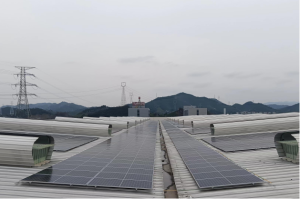
Solar energy also supports energy independence by reducing dependence on imported fossil fuels, enhancing energy security, and providing resilience against fluctuations in global energy markets. Solar power’s low operating costs are another benefit: once installed, solar panels require minimal maintenance and are less costly to operate than
traditional power plants. As solar technology advances, panel efficiency continues to improve, making solar power an increasingly cost-effective and sustainable energy solution.
Hydro Energy
EP’s new factory in Hubei Province, dedicated to casting production, spans 66,667 square meters and is powered primarily by clean hydroelectric energy.
In line with EP’s green production goals, the factory relies on electricity sourced from the Hubei Danjiang Hydropower Station. This power station, with an installed capacity of 900,000 kilowatts and an average annual output of 3.8 billion kWh, has enabled the Hubei factory to enhance its production efficiency, helping EP Equipment reach an annual production figure of 300,000 units.
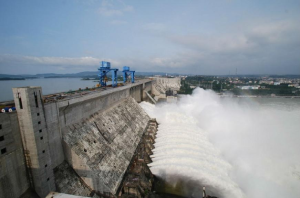
Why EP chose Hydro Energy
Hydroelectric power is highly efficient, providing low-cost electricity with quick startup times and flexible regulation. Since it harnesses the natural flow of water, hydroelectricity is also a renewable source that minimizes environmental impact. Hydropower plays an essential role in the comprehensive use of water resources, offering multiple benefits such as shipping support, irrigation, flood control, and tourism.
In addition to being a cost-effective energy source, hydroelectric power offers significant environmental and economic advantages. It not only provides affordable electricity but also aids in flood management, supports irrigation, enhances river navigation, and stimulates local economic growth. By choosing hydroelectric power, EP supports sustainable development while fostering tourism and aquaculture opportunities in the region.
EP’s Ongoing Commitment to Green Energy
EP Equipment is continuously advancing its Green Energy Project, emphasizing energy efficiency, environmental protection, and alignment with the green economy. As a large industry leader, EP aims to set an example in adopting clean energy practices that not only reduce costs but also support a more sustainable future. With the development of the second phase of this project, EP plans to generate additional power that can contribute to the local grid, benefiting other companies and government initiatives to address electricity demands.
By leading in green energy adoption, EP is committed to long-term environmental responsibility, playing a crucial role in global sustainability efforts with lasting positive impacts.